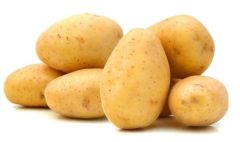PASSAGE 2 WHAT’S HAPPENING TO OUR FOOD
26 تیر 1403 1403-08-12 11:32PASSAGE 2 WHAT’S HAPPENING TO OUR FOOD
READING PASSAGE 2
You should spend about 20 minutes on Questions 14-26, which are based on Reading Passage 2 below.
WHAT’S HAPPENING TO OUR FOOD?
Is the way we produce and process food making it less nourishing than in our grandparents’ day?
A We now know a lot about what food does to the body and the importance of a healthy diet. But what if modern intensive farming methods have affected the mineral and vitamin content of what we eat? Donald Davis, at the University of Texas, has found notable declines in nutrients in crops including tomatoes, eggplants and squash. Davis blames agricultural practices that emphasise quantity over quality. High-yielding crops produce more food, more rapidly, but they can’t make or absorb nutrients at the same pace, so the nutrition is diluted. ‘It’s like taking a glass of orange juice and adding water to it. If you do that, the concentration of nutrients that was in the original juice drops,’ he says. But the idea that modern farming produces less nourishing crops remains controversial, since nutrient levels can vary widely according to the variety of plant, the year of harvest and the time of harvest.
B But intensive farming has also led to a huge increase in food supply, which has undoubtedly had a positive effect on our diet and health. ‘Evidence suggests that some nutrients have fallen, particularly trace elements such as copper in vegetables,’ says Paul Finglas, at the Institute of Food Research in Norwich. ‘Foods are now bred for yield, and not necessarily nutritional composition. But I don’t think that is a problem, because we eat a wider range of foods today than we did 10 years ago, let alone 40 years ago’. Eric Decker, professor of food science at the University of Massachusetts in Amherst, agrees. If nutrients are declining, the losses are insignificant, he says. ‘Over the last century, lifespans have got longer, people are bigger and stronger, and a lot of that has to do with the food supply being better.’ Even Davis agrees that any differences in nutrient levels are relatively small. ‘Despite their declines, fruit and vegetables are still our richest source of many nutrients, and you can make up for it by eating more,’ he says. ‘But we know that many people don’t get the recommended amounts of nutrients such as iron, magnesium, and calcium. They aren’t overt deficiencies in the usual sense, but they increase susceptibility to lots of different problems.’
C In addition to changes in its production, food is being transported for ever-increasing distances. Fruit and vegetables in supermarkets might look shiny and fresh, but often they were picked several days earlier. Some nutrients, particularly vitamin C and folic acid, begin to deteriorate as soon as picking happens, but manufacturers can take action to minimise this. ‘Lots of these reactions are driven by enzymes,’ says Carol Wagstaff, from the University of Reading, UK, who points out that chilling is the best way of slowing down such reactions. That said, if you are choosing between organic fruit or vegetables from a distant country or locally grown, non-organic ones, always opt for home-grown, she says. ‘From a nutritional standpoint, go for the shortest possible supply chain rather than the production method.’
Many kinds of mass-produced fruit and veg – most famously tomatoes – are harvested unripe before being transported to supermarkets. Wagstaff agrees that this may cause some loss of flavor, compared with a tomato that you have grown at home, and left on the plant until it’s absolutely ready to eat. ‘But there’s no way you could do that at a commercial level, because of the bruising and other types of damage that would occur if ripe fruits were transported through a typical supply chain,’ she says. In addition, each method of shipping and storing foods has different effects on the compounds they contain. Vitamin C, for example, breaks down in the dark, whereas glucosinolates – found in vegetables like cabbage – deplete in the light.
D Surprisingly, frozen fruit and vegetables are often nutritionally better than fresh. ‘Frozen peas are much more nutritious than those you buy ready to shell,’ says Catherine Collins, principal dietician at St George’s Hospital in London. What’s more, frozen foods often have fewer additives. ‘Freezing is a preservative,’ she says. Similarly, processing has become a maligned word in the context of food, but there are some cases where it enhances a food’s health benefits. For example, lycopene – a compound tomatoes are rich in, and which has been shown to protect against certain diseases – is much more readily absorbed by humans from tomato paste than fresh tomatoes. A recent trend is the sale of ‘fresh-cut’ fruit and vegetables – peeled potatoes, ready chopped carrots and bagged salads. One in five adults in the UK regularly buys fruit and vegetables in this form every week, according to market research firm Mintel. Surely this cutting and peeling speeds up the degradation of nutrients? ‘There is a chance that ready prepared vegetables may have a lower content of some vitamins,’ says Judy Buttriss, of the British Nutrition Foundation in London. ‘But if their availability means that such vegetables are consumed in greater quantities, then the net effect is beneficial.’
E The bottom line is that although aspects of today’s food production, processing and storage might make what we eat a bit less nutritious, they are also making foods more available – and this is far more important. ‘The most important thing you can do is eat more fruits, vegetables and wholegrains, and cut down on highly refined, processed foods, vegetable oils and added sugars,’ says Davis. He believes this will make a far greater difference to us than worrying about growing methods and transportation.
Questions 14 – 18
Reading Passage 2 has 5 sections, A – E.
Which section contains the following information? Write the correct letter, A – E, in boxes 14 – 18 below.
NB You may use any letter more than once.
14 an admission that if one type of food is harvested too soon, its taste may be affected
15 the view that there is not a great difference between the quantity of nutrients in our food now and in the past
16 a comparison which illustrates why developments in agriculture may reduce the amounts of nutrients in foods
17 a warning that customers could be deceived by the attractive appearance of a fruit or vegetable
18 evidence of the popularity of a new development in food processing which aims to save customers trouble
Questions 19 – 22
Look at the following statements (Questions 19 – 22) and the list of people below. Match each statement with the correct person, A – F.
Write the correct letter, A – F, in boxes 19 – 22 below.
List of people
A Donald Davis
B Paul Finglas
C Eric Decker
D Carol Wagstaff
E Catherine Collins
F Judy Buttriss
19 People are more likely to become ill if they have low levels of some nutrients.
20 Making healthy foods easy to cook may be more important than their vitamin content.
21 An improved diet has made people nowadays live longer and be healthier than in the past.
22 People’s diets are more varied now than they were in the past.
Questions 23 – 26
Complete the summary below.
Choose ONE WORD ONLY from the text for each answer. Write your answers in boxes 23 – 26 below.
Food transportation
In order to prevent loss of nutrients when transporting fruit and vegetables, chilling is used to slow down the effect that 23 ……… have on them. Some foods, such as tomatoes, must be picked before they are ripe to avoid problems such as 24 ………during transportation. Other foods, such as cabbage, lose nutrients when kept in the 25 ………. . Vegetables such as 26……… , which are picked fresh and transported to the supermarket, may be less nutritious
than those which are frozen.
14. C (This section talks about how unripe tomatoes might lose flavor)
15. B (Paul Finglas says the decline is insignificant)
16. A (Donald Davis compares diluted orange juice to nutrient decline)
17. C (This section warns that supermarkets fruits might look good but not be fresh)
18. D (This section talks about the popularity of pre-cut vegetables)
19. A (Donald Davis says low nutrient levels increase susceptibility to problems) (Paragraph B)
20. E (Catherine Collins says availability is more important than processing effects) (Paragraph D)
21. C (Eric Decker says lifespans are longer due to better food supply) (Paragraph B)
22. B (Paul Finglas says we eat a wider range of food today) (Paragraph B)
23. enzymes (paragraph C mentions chilling slows enzyme reactions)
24. bruising (paragraph C talks about damage to ripe fruits during transport)
25. light (paragraph C mentions glucosinolates deplete in light)
26. peas (paragraph D says frozen peas are more nutritious than fresh)







